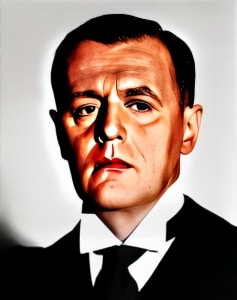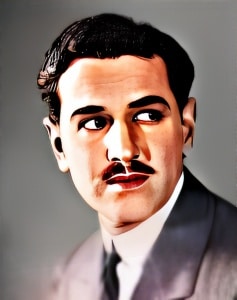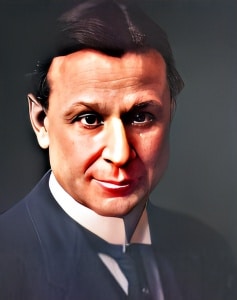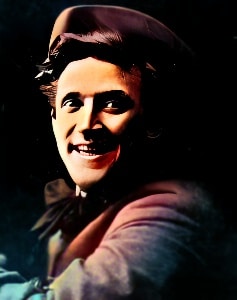 Hans Heinrich von Twardowski, born on May 5, 1898, in Stettin, Pomerania, German Empire (now Szczecin, Poland), was a multifaceted figure in the world of early German cinema.
Hans Heinrich von Twardowski, born on May 5, 1898, in Stettin, Pomerania, German Empire (now Szczecin, Poland), was a multifaceted figure in the world of early German cinema.
As an actor, screenwriter, and director, he played a notable role in shaping the emerging film industry during the silent film era and beyond.
Von Twardowski’s journey into the world of entertainment began during a time when the film industry was still in its infancy. Silent films were the predominant form of entertainment, relying heavily on visual storytelling and nonverbal acting. Actors like Von Twardowski had to convey emotions and narratives primarily through facial expressions and physical movements, which required a unique set of skills.
One of the pivotal moments in Hans Heinrich von Twardowski’s career was his involvement in the iconic 1920 silent film “The Cabinet of Dr. Caligari,” directed by Robert Wiene. This groundbreaking work of German expressionist cinema is celebrated for its visually striking set design and eerie, dreamlike atmosphere. In the film, Von Twardowski portrayed the character Alan, one of the central figures whose narrative serves as the backbone of the story. His performance was pivotal in conveying the emotional and psychological turmoil experienced by his character and contributed significantly to the film’s success.
“The Cabinet of Dr. Caligari” is known for its use of distorted, angular, and nightmarish architecture in its set design, creating a sense of disorientation and unease. Von Twardowski’s ability to convey complex emotions primarily through facial expressions and physical acting added depth to the film’s atmosphere, making him a key figure in the history of the horror genre.
Von Twardowski’s talent extended beyond acting. He ventured into screenwriting and directing, showcasing his versatility in various aspects of the film industry. His contributions as a writer and director added to his reputation as a multifaceted talent.
As the transition to sound films marked a significant shift in the film industry, many silent film actors struggled to adapt to this new era. Von Twardowski, however, successfully made the transition, demonstrating his adaptability and commitment to his craft.
One of the notable sound films in Hans Heinrich von Twardowski’s career was “M” (1931), directed by Fritz Lang. In this iconic German film, he portrayed a chilling role as one of the criminals hunting a child murderer, played by Peter Lorre. Von Twardowski’s performance added depth and intensity to the film’s suspenseful and dramatic narrative.
Von Twardowski’s ability to excel in a variety of roles, his contributions as a writer and director, and his adaptability in the transition to sound films made him a sought-after figure in the early years of cinema. His performances continued to captivate audiences, and his enduring impact on the world of cinema remains a valuable part of the rich history of early Hollywood.
In conclusion, Hans Heinrich von Twardowski was a remarkable figure in the early years of German cinema. His career spanned the silent film era and the transition to sound films, during which he showcased his versatility as an actor, writer, and director. While his name may not be as widely recognized today as some of the leading figures of his time, his contributions and enduring impact on the world of cinema remain a valuable part of the history of early Hollywood. Von Twardowski’s talent and versatility continue to captivate audiences and inspire generations of actors and filmmakers.
Loading live eBay listings...




